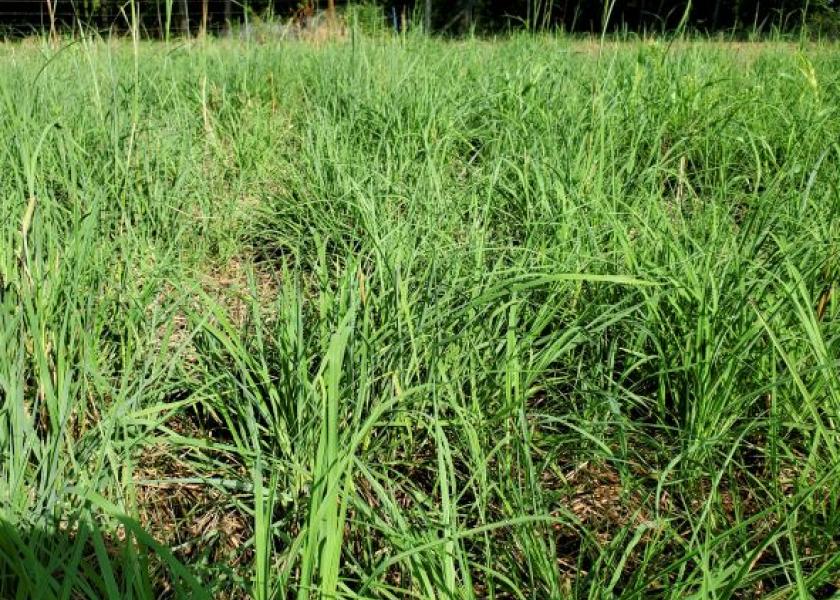Native Grasses, Biochar, Silvopasture Part of Arkansas Carbon Sequestration Study

The University of Arkansas System Division of Agriculture will take part in a program called “Climate-Smart Grasslands: The Root of Agricultural Carbon Markets,” to measure carbon sequestration and greenhouse gas reduction possibilities in American grasslands. The project is funded in part by the U.S. Department of Agriculture’s $2.8 billion Partnership for Climate-SMART Commodities program. SMART stands for “Scaling Mechanisms for Agriculture’s Regenerative Transformation.”
The Arkansas Agricultural Experiment Station, the research arm of the Division of Agriculture, will take part in measuring carbon sequestration and greenhouse gas emissions in grasslands while the Cooperative Extension Service will provide outreach and education to agricultural producers.
The Division of Agriculture will be supported with funding from the USDA grant for the five-year project with goals to monetize improved carbon storage and greenhouse gas reductions for use in a market that trades carbon credits. There are 28 entities partnering in the grasslands project, including 11 universities. Patrick Keyser, professor and director of the Center for Native Grasslands Management at the University of Tennessee, leads the project.
Dirk Philipp, associate professor of animal science with the experiment station, is the principal investigator for Arkansas, and Mike Daniels, professor and extension soil and water conservation scientist, is the co-principal investigator for Arkansas.
“The idea is to go directly to farmers through their county agents and establish carbon capturing measures that include regenerative grazing, organic sources of nitrogen like legumes, soil amendments like biochar and gypsum, silvopasture and perennial grass buffers,” Philipp said.
Producers who are considered minorities and limited-resource farms, will be proactively engaged to become collaborating partners, the grant proposal states.
Grasslands account for the largest agricultural land use in the United States, according to a USDA land use report. About 50 million of the nation’s 665 million acres of grassland are located in what is called the Tall Fescue Belt, which supports nearly 40 percent all cow-calf operations in the nation. Pasture area declined within this region by 1.8 million acres between 2012 and 2017. The loss represents a “substantial reduction in carbon storage capacity,” the grant proposal noted.
Philipp said grassland pastures can capture more carbon with native grasses, but building up organic matter is an important first step.
“The emphasis is on building up the soil,” Philipp said. “Native perennial grasses are a good start because you can potentially translocate more carbon below the soil surface, because the native grasses have larger root systems and a higher above-to-below ground biomass ratios than introduced perennial grasses.”
A diverse selection of native grasses would also provide beneficial wildlife habitat, Philipp said. The native grasses that will be planted in pastures of participating farmers for cattle forage may include a mix of Big Bluestem, Little Bluestem, and Indiangrass.
Incorporating silvopasture, the practice of planting trees in pastures with shade tolerant forage grasses, is another strategy proposed in the project because of the high carbon-capturing ability of young trees. Philipp conducted a three-year silvopasture study between 2019 and 2021 to find suitable forage grasses for growing in shaded environments within stands of trees. Tall fescue and orchardgrass performed well but are likely not the only suitable choices.
While measurements of carbon sequestration in trees is well documented, there has been very little work on how much carbon that grasslands can capture, the grant proposal noted. In addition to outreach and education efforts through the Cooperative Extension Service, the USDA grant will allow Philipp to partially support a research associate to take measurements of carbon and greenhouse gas emissions in collaborating farmers’ fields.
Other practices that will be studied include regenerative grazing to improve forage management; soil amendments with biochar and gypsum; and perennial native grass buffers around row-crop fields in marginally productive areas. Measurements will also be made on fields that use organic sources of nitrogen like legumes and poultry litter, as well as inorganic nitrogen like urease inhibitors that protect against ammonia volatilization.







